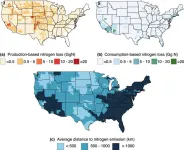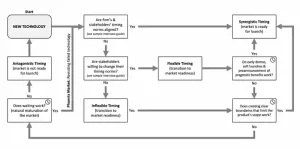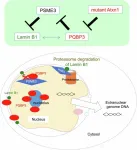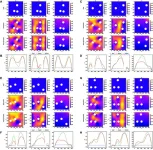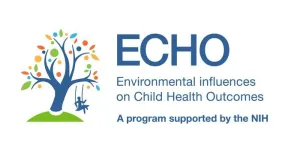(Press-News.org) Anyone who’s researched ways to lower their environmental impact has likely heard they should eat less meat, particularly beef. Even at scale, cows are an inefficient way to feed people — it takes nearly four tons of water to recoup one ton of beef, and many farming practices emit greenhouse gasses and pollutants.
University of Pittsburgh researchers are the first to trace one of those pollutants, nitrogen, along the U.S. beef supply chain at the county level. They found high spatial disconnect between where beef is eaten and where nitrogen’s impacts are felt.
Previous research looked at production-based impacts, said Vikas Khanna, professor of civil and environmental engineering in the Swanson School of Engineering. “They’ve asked, ‘what does it take to produce a certain quantity of beef?’ And they tend to report average environmental impacts,” such as how much water, greenhouse gasses or other pollutants result over the entire process.
In a paper published in the journal Environmental Science and Technology, Khanna and PhD student Anaís Ostroski map the impacts of nitrogen county by county, providing the clearest picture yet of which areas face some of the environmental effects of cattle farming. Khanna and Ostroski are joined by Oleg Prokopyev, a former professor of industrial engineering at Pitt now at the University of Zurich.
“It is essential to measure nitrogen losses and understand where they happen due to the cascading effects on the environment,” said Ostroski, the paper’s lead author. “A single molecule of reactive nitrogen can cause multiple adverse effects until it is converted back to stable atmospheric nitrogen. Food supply chains have grown increasingly complex; we found that when beef is consumed in a given county, it is associated with nitrogen losses in more than 200 counties on average.”
Our atmosphere is 79% nitrogen, but atmospheric nitrogen has strong bonds and doesn’t react with other substances. The nitrogen used for fertilizer, however, is reactive. As it accumulates it can create surface-level ozone, which can lead to respiratory problems. When rain washes nitrogen fertilizers from croplands into waterways, it can spark runaway algae growth, which takes oxygen from the water, suffocating fish and other marine life.
In 2017, beef consumption was responsible for about 1,330 gigagrams of nitrogen released into the environment — that’s enough to fertilize about 19.5 million acres, or 20% of all the corn grown in the United States.
When beef is consumed in a given county, it is associated with nitrogen losses in more than 200 counties on average.
Anaís Ostroski
its effects are not felt equally across the country.
The new research shows people living along the East Coast and in large swaths of California, Nevada and Arizona are more than 600 miles away from the nitrogen that entered the environment in service of their burger.
The pollution happens in a few different ways along the supply chain. Cows are fed food that is grown using nitrogen fertilizers. Much of that is leached away by rainwater, tainting nearby land and water supplies.
Beef cattle are kept in processing facilities where nitrogen is released in wastewater. Here, Khanna sees an opportunity to minimize nitrogen pollution by implementing a circular economy model where valuable nutrients like nitrogen and phosphorus are recovered from the wastewater.
“Recouping nutrients from animal wastewaters would be a win-win solution,” he said. Nitrogen would be kept out of the ecosystem, and farmers could reuse the nitrogen as fertilizer while also reusing the treated water for irrigation.
While it’s important to look at technological solutions to reduce the impact of cattle farming on the environment, Khanna has words of caution about technological exuberance, “Let's not just look at the trees and miss the forest. It is important to look at potential solutions from a holistic perspective to make sure we are not solving one problem at the expense of others.”
END
People eating beef are less likely to live near the industry’s pollution, Pitt researchers found
2024-09-03
ELSE PRESS RELEASES FROM THIS DATE:
Can technology turn exercise pain into pleasure?
2024-09-03
Virtual reality (VR) video games that combine screen time with exercise are a great way to get fit, but game designers face a major challenge – like with regular exercise, adherence to ‘exergames’ is low, with most users dropping out once they start to feel uncomfortable or bored.
Computer scientists at the University of Bath believe they’ve found a solution: create exergames that use sensors to continuously measure a person’s emotional state while they exercise, then tweak the game – for instance, making ...
When is the right time to launch new technologies?
2024-09-03
New research from Bayes Business School (formerly Cass) finds that being on the cutting edge of technology is not enough to ensure success in the market, and managers must strategically time launches to create a source of opportunity and credibility for the firm.
The study, led by Dr Thomas Robinson, Senior Lecturer in Marketing at Bayes, with Dr Ela Veresiu, Associate Professor of Marketing at Schulich School of Business, York University, Toronto, develops a framework for guiding organisations on the best situations for a product launch.
The research identifies four timing situations that can confront marketing managers. Knowing ...
Mayo researchers develop tool that measures health of a person’s gut microbiome
2024-09-03
ROCHESTER, Minn. — A team of Mayo Clinic researchers has developed an innovative computational tool that analyzes the gut microbiome, a complex ecosystem of trillions of bacteria, fungi, viruses and other microorganisms within the digestive system, to provide insights into overall well-being.
In a new study published in Nature Communications, the tool demonstrated at least 80% accuracy in differentiating healthy individuals from those with any disease. The tool was developed by analyzing ...
Unveiling the molecular mechanisms linking aging with neurodegenerative diseases
2024-09-03
Tokyo Medical and Dental University (TMDU) researchers elucidate the role of PQBP3 in stabilizing the nuclear membrane and its relationship to senescence and neurodegeneration
Tokyo, Japan – Aging is the prime cause of neurodegenerative diseases, such as Alzheimer’s disease, Parkinson's disease, and amyotrophic lateral sclerosis. But what exactly increases the prevalence of these brain disorders as one grows older? The molecular forces linking aging, cellular senescence, and the onset of these neurodegenerative conditions ...
Keep devices out of bed for better sleep – Otago study
2024-09-03
Despite what we’ve been led to believe, the timing of evening screen use, rather than the activity itself, negatively impacts youth sleep, a University of Otago study has found.
Current sleep guidelines recommend no screen use in the hour or two before bed. However, the researchers found screen time in the two hours before bed had little impact on youth sleep, it was screen time once in bed that caused problems.
Lead author Dr Bradley Brosnan, of the Edgar Diabetes and Obesity Research Centre, says screen time is a mainstay in adolescents’ bedtime routines, and sleep guidelines need to be revaluated to better reflect modern life.
Published in JAMA Pediatrics, ...
Dr. Torabi to study vulnerabilities in electric vehicle charging management systems
2024-09-03
Dr. Sadegh Torabi, Assistant Professor, Information Sciences and Technology, College of Engineering and Computing (CEC), and Research Fellow at the Center for Secure Information Systems (CSIS), is set to receive funding for the project: “Collaborative Research: CISE MSI: RPEP: OAC: Macroscopic and Microscopic Inference and Analysis of Vulnerabilities within EV Charging-Management Systems.”
Via this project, Dr. Torabi and his partners will establish a collaborative ecosystem among academia, industry, and the public sector to bolster the resilience of the EV Charging Infrastructure (CI). The critical nature of EV CI has made them targets for malicious attacks, often state-sponsored, ...
Think simpler, flow faster
2024-09-03
Analyzing and simulating fluid flow is a challenging mathematical problem that impacts various scenarios, including video game engines, ocean current modeling and hurricane forecasting. The core of this challenge lies in solving the Navier–Stokes equations, a set of classical equations that describe fluid dynamics. Recently, deep learning has emerged as a powerful tool to accelerate equation solving. Using this technique, a team designed a novel approach that can provide accurate solutions 1,000 times faster than traditional equation solvers. The team’s study was published June 26 in Intelligent ...
Eating fish but not omega-3 supplements during pregnancy associated with lower likelihood of autism diagnosis, NIH-funded study finds
2024-09-03
Eating any amount of fish during pregnancy was associated with about a 20% lower likelihood of autism spectrum disorder (ASD) diagnosis, particularly in females, and a slight reduction in autism-related traits in offspring, according to a new study funded by the Environmental influences on Child Health Outcomes (ECHO) Program at the National Institutes of Health.
However, researchers did not find the same association with supplements containing omega-3 fatty acids.
Fish is an important source of omega-3 fatty acids, an essential nutrient during pregnancy for supporting maternal health and child neurodevelopment. A recent analysis of ECHO Cohort data revealed that about ...
Study: racial and ethnic designation inaccuracies in children’s medical records may impede equity efforts
2024-09-03
ANN ARBOR, Mich. – Leaders at three Michigan hospitals aiming to address equity issues for pediatric patients wanted to start with inspecting data key to identifying potential inequities.
What they learned: much of those data are inaccurate.
A study from the Michigan Child Health Equity Collaborative, or Mi-CHEC, found substantial errors across the three health systems in racial and ethnic designations in their electronic medical records. Accuracy of these designations are important to clinical care improvement ...
Penn study finds taking semaglutide for weight management does not increase risk of depression or suicidal behavior in people without known major psychopathology
2024-09-03
PHILADELPHIA— Taking the weight loss medication semaglutide did not increase the risk of depressive symptoms, suicidal thoughts, or suicidal behavior in persons without known major mental health disorders, according to a new study led by researchers from the Perelman School of Medicine at the University of Pennsylvania published this week in JAMA Internal Medicine. Both the Food and Drug Administration (FDA) and the European Medicines Agency are actively monitoring the psychiatric safety of semaglutide and similar medications after post marketing surveillance reports of depression, suicidal thoughts (ideation), ...
